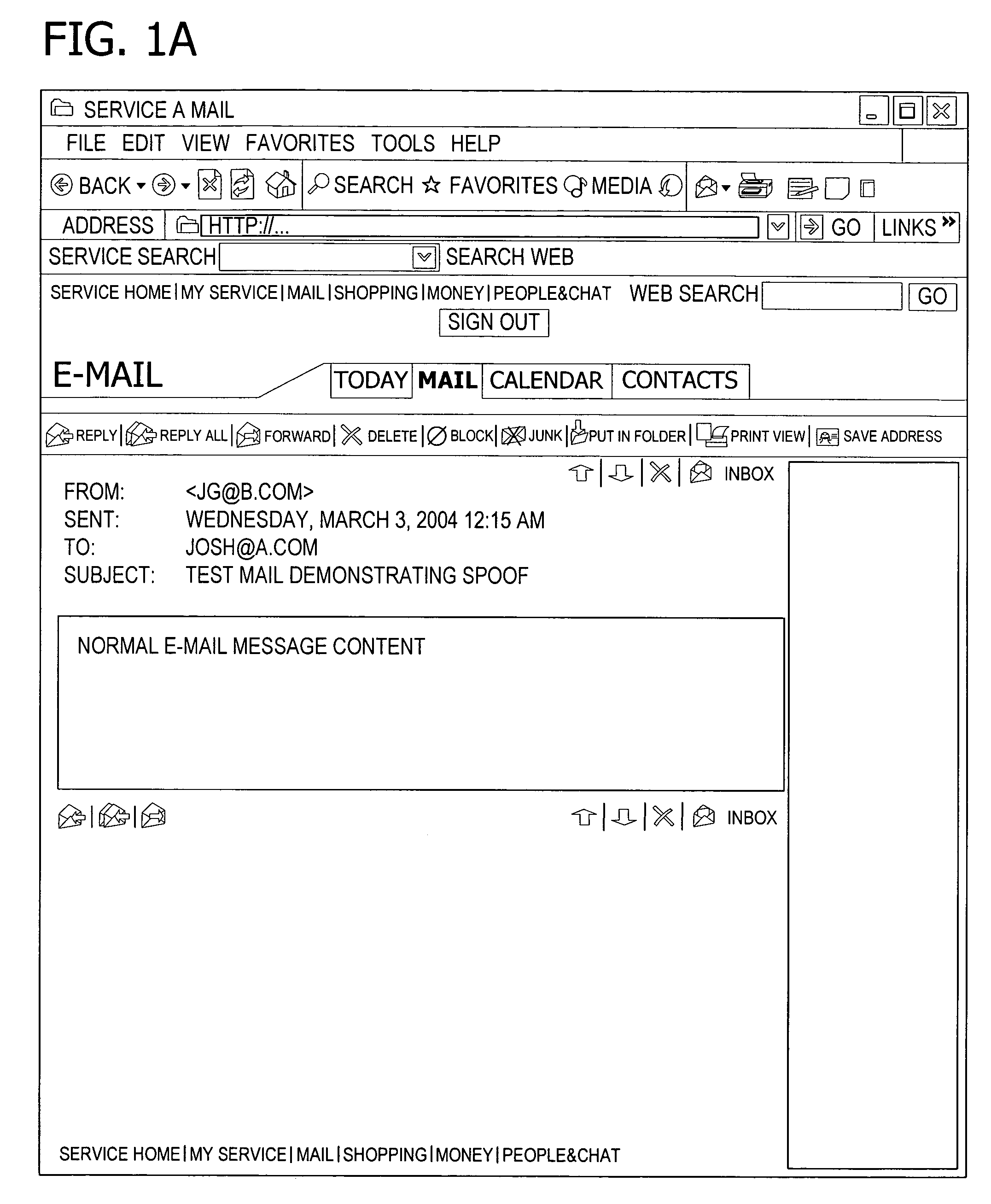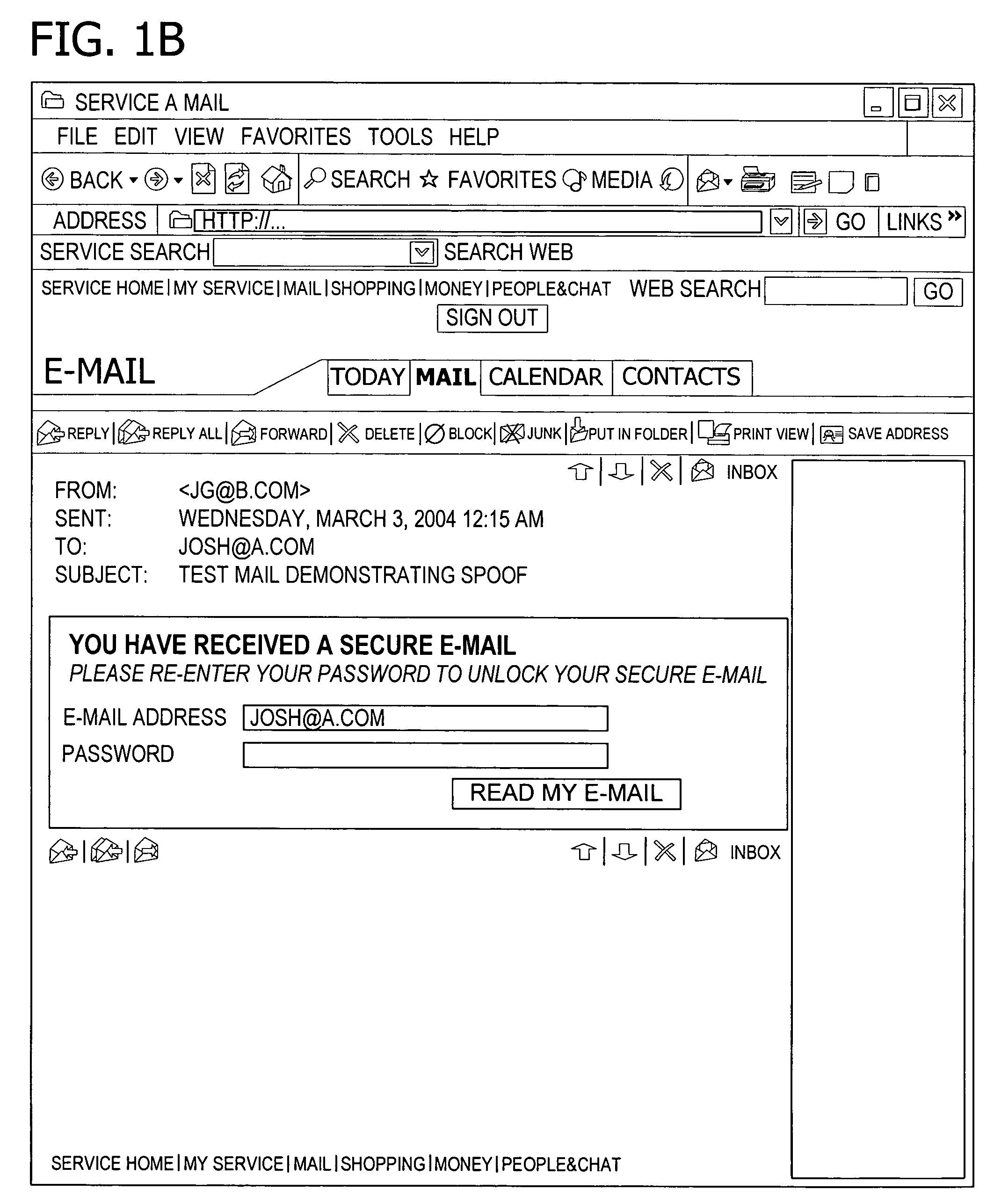Flow token
a technology of flow tokens and tokens, applied in the field of computer security, can solve the problems of loss of trustworthiness and confidence in the service, loss of user information, and disclosure of confidential user information, so as to prevent the attacker from taking control of a user's account, improve the management of process flow, and prevent security attacks on web servers.
- Summary
- Abstract
- Description
- Claims
- Application Information
AI Technical Summary
Benefits of technology
Problems solved by technology
Method used
Image
Examples
Embodiment Construction
[0026]Referring further to the drawings, FIG. 2 illustrates an exemplary network environment in which the present invention may be utilized. The invention relates to managing, including securing, process flow among web sites and users. For purposes of illustration, aspects of the invention are applicable to a distributed, multi-site user authentication system (e.g., Microsoft®.NET™ Passport sign-in service). Such service provides a user with the ability to access one or more participating web sites or resources with a single sign-in. Although the participating sites (referred to herein as “affiliates” or “affiliate sites”) maintain control over permissions, they use the authentication service rather than hosting and maintaining their own proprietary authentication systems. Those skilled in the art will note that although the invention is described in terms of a multi-site user authentication system, it is contemplated by the inventors that the invention is operable with any type and...
PUM
 Login to View More
Login to View More Abstract
Description
Claims
Application Information
 Login to View More
Login to View More - R&D
- Intellectual Property
- Life Sciences
- Materials
- Tech Scout
- Unparalleled Data Quality
- Higher Quality Content
- 60% Fewer Hallucinations
Browse by: Latest US Patents, China's latest patents, Technical Efficacy Thesaurus, Application Domain, Technology Topic, Popular Technical Reports.
© 2025 PatSnap. All rights reserved.Legal|Privacy policy|Modern Slavery Act Transparency Statement|Sitemap|About US| Contact US: help@patsnap.com



